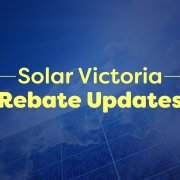Solar Jargon Buster
We try to make solar as simple as we can but sometimes we can’t help but use the technical terms. That’s why we have created a Jargon Buster to help demystify the solar terminology we use.
|
Terminology |
Explanation |
|
PV |
Photovoltaics – Photo = light; Volt = electrical potential, basically electricity from light.
|
|
kW |
Kilowatt is a measure of power meaning 1000 watts. The size of a solar PV system is defined by its peak power efficiency. Therefore a 3kW system could produce 3kW of power on a sunny day. |
|
kWh |
kWh: Kilowatt-hour is a unit of energy (not power). If your solar panels output 3kW of power continuously for an hour you would have made 3kWh of energy.
An average TV uses 1 kW of power an hour = 1 kWh
|
|
mWh |
mWh: Megawatt-hour is a unit of energy: 1 mWh =1,000 kWh
|
|
STC’s |
Small-scale Technology Certificates are an electronic form of currency. 1 STC is equivalent to one megawatt-hour of electricity generated by your solar PV system. Households and small businesses across Australia may be eligible to receive STC’s from the government after installing solar. In other words a rebate.
|
|
Tier 1 Product |
Top 2% of solar manufactures that invest heavily in research and development. They are only made through robotics to avoid human error.
|
|
DC |
Direct current is the type of electricity created by your panels through absorbing sunlight.
|
|
AC |
Alternating current is type of power that everything in your house runs off.
|
|
Inverter |
An inverter changes the DC from the panels into AC so your house can use the energy.
|
|
String System |
All the panels are connected meaning that all the panels will generate the same amount of power.
|
|
Micro inverter system |
Each panel has a micro inverter beneath it. This means that all the panels work individually allowing less more energy to be generated.
|
|
FIT |
Feed in Tariff is a rate paid for electricity fed back to the grid.
|
|
Solar meter |
Solar meters display in real time PV energy production data. |
|
Smart meter |
A smart meter records consumption of electric energy and communicates this information to your energy supplier. |
|
Polycrystalline Solar Panel |
Polycrystalline panels are made from melting down multiple cells. They tend to be lighter in colour, less space efficient and less expensive than Monocrystalline. |
|
Monocrystalline Solar Panel |
Monocrystalline panels are made from slicing one silicon cell. They are darker in colour, more space efficient and usually more expensive than Polycrystalline. |
|
NMI |
National Metering Identifier is a unique number used to identify every electricity network connection point in Australia. |







 Sunbank Solar Batteries
Sunbank Solar Batteries






